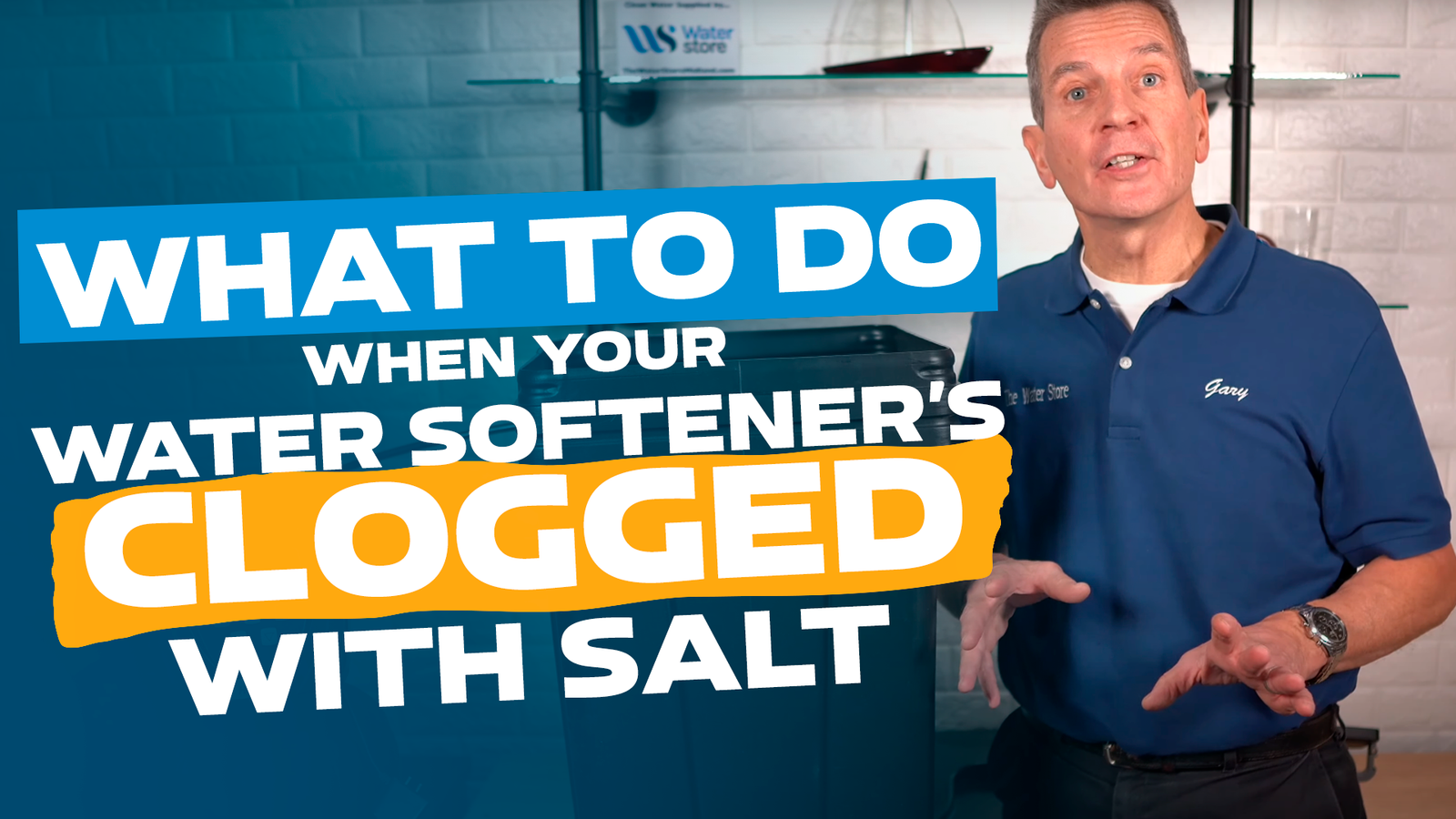
Has your water softener stopped working? Have you noticed it has stopped using salt? Is your water now hard?
You might be dealing with a salt clog in the bottom of your tank. This means that your salt has essentially hardened into one big mass of salt, which means your water softener can no longer do its job.
How do you fix this? The good news is that this is absolutely something you can fix yourself and there is no need to call in a professional.
This is the DIY way to diagnose and fix your salt clog problem.
Confirm That You Have a Salt Clog and Not a ‘Salt Bridge’
If you open up your unit, the salt pellets on top may look normal. But, if you dig down a little, you may find a hardened mass of salt underneath them.
You can also check by using a broom, mop, or something else with a long handle, but nothing with a sharp end. Turn it upside down and put it inside the water softener. If the end of your stick goes through the salt right to the bottom, you do not have a salt problem, just stir up the salt with the handle and you are done.
If your handle breaks a thin layer of salt resting on top, you have what’s called a “salt bridge,” which is also very common. You can simply break it up with the handle, then remove the pieces with a strainer or pet scoop.
On the other hand, if your broom handle only goes into the salt a short way and then stops, this means your water softener brine tank is clogged with salt and needs to be cleaned out.
Here’s how…
Removing the Salt Clog in Your Water Softener
If you need a visual aid, we have a step-by-step walk-thru video that you can watch by clicking here.
You will begin by turning off your water softener’s water at the incoming faucet or by using the bypass valve.
Next, you will want to gently tap the salt with your broom handle to break up whatever salt that you can. From there, you can remove the loose salt pellets from the top with a plastic container or pet food scoop. Be careful as you do this. The goal is to chip away at the salt crust, while staying away from the sides so you don’t accidentally puncture the sides of your unit.
Break up those chunks and remove them by scooping them up and putting them into a bucket. There will usually be water in with the salt, so you will want to vacuum the water out of the bottom of the softener with a wet/dry vacuum.
Once you’re down to the solid block of salt, pour about 2 gallons of hot tap water (hot as you can get, but not boiling) over the remaining salt mass, and then pour about a quart of hot water into the brine well (the smaller cylinder inside the salt tank) after removing its cap. Now, turn the water to your softener back on and let it sit for about 4 hours.
Next, you’re going to want to do a manual regeneration cycle on your water softener. If you’ve never done that before, you can follow the instructions in your unit’s instruction manual, or watch this video for a step-by-step walk-thru.
Come back to it the next day after the softener has regenerated. Try breaking up the salt again with the stick. Do not add any more salt until your clog has been totally removed! You may need to repeat pouring the hot water over the clog again and then repeat the regeneration again. For serious clogs, you may need to repeat this process several times before the salt clog is removed. And that’s Ok. Stay patient with it.
Once the salt clog is gone, fill your salt tank 2/3 full of new water softening salt. But don’t top up the salt again until it is down to about the ¼ full level. This will minimize the chances of this happening again in the future.
If you're not sure how much salt should be in your brine tank, you can check out this video.
At the same time, the actual salt you choose can play a major role in preventing a salt clog. This video will help you choose a salt that won’t clog your water softener.
How/Why Do Salt Clogs Happen?
We’ve noticed this problem creeping up more often in modern water softener units.
In a lot of cases, it’s because we’re using the purer water softener salts. When that salt gets wet without being totally used up, the unused salt may begin to compress and bind together. Over time the salt forms a solid mass at the bottom of the salt tank, which stops water from flowing into/out of the salt tank.
This didn’t really happen with older water softeners that used rock salt. These machines were also not as efficient, so there was less unused salt to compress.
Do You Have Questions About Your Water?
If you want to learn more about water filtration systems, check out our YouTube channel. Or, you can contact us by clicking here.

